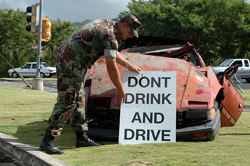
Laura’s Law went into effect on Dec. 1, 2012, months after the new DWI legislation was originally signed into law in 2011. North Carolina’s new legislation expands the sanctions and monitoring requirements of repeat drunk drivers.
The law is named after Laura Fortenberry, a 17-year-old who was killed when a three-time convicted drunk driver slammed head-on into the car she was riding in. The 28-year-old drunk driver, Howard Pasour, had three prior DWI convictions.
State lawmakers can now integrate Continuous Alcohol Monitoring (CAM) into both pretrial and probation requirements, this will essentially extend the period of use that the CAM can be ordered by court. Previously, CAM had a limit of 60 days. Lawmakers hope that this heightened level of monitoring will protect the community from the highest-risk drivers.
The CAM program is funded by the offenders.
In 2012, North Carolina DWI laws also expanded in the case of increasing punishments for Felony Death by Motor Vehicle. Previous law made Felony Death by Motor Vehicle a Class E Felony, which made the sentencing standard 3 or 4 years in the defendant did not have a previous criminal record. In the more serious cases when the defendant had a very high BAC, the prosecutors would sometimes seek Second Degree Murder charges, as in the case of Dr. Raymond Cook who was accused of killing Elena Shapiro in 2011. Now, the North Carolina General Assembly increased the punishment of Felony Death by a Motor Vehicle to a Class D, meaning a Level 1 offender without a prior record may be sentenced to 80 months (nearly 7 years) which just about doubles the previous sentence.